by Ashutosh Jogalekar
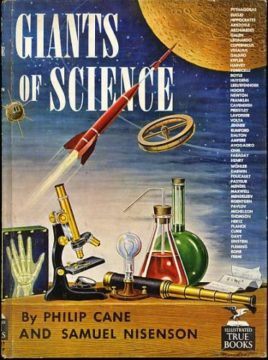 In many ways, the story of my life is the story of books that I have read and loved. Books haven’t just shaped and dictated what I know and think about the world but they have been an emotional anchor, as rock solid as a real ship’s anchor in stormy seas. As the son of two professors with a voracious appetite for reading, it was entirely unsurprising that I acquired a love of reading and knowledge very early on. The Indian city of Pune that I grew up in was sometimes referred to as the “Oxford of the East” for its emphasis on education, museums and libraries, so a love of learning came easy when you grew up there. For 35 years until their mandatory retirement, my parents both taught at Fergusson College in Pune.
In many ways, the story of my life is the story of books that I have read and loved. Books haven’t just shaped and dictated what I know and think about the world but they have been an emotional anchor, as rock solid as a real ship’s anchor in stormy seas. As the son of two professors with a voracious appetite for reading, it was entirely unsurprising that I acquired a love of reading and knowledge very early on. The Indian city of Pune that I grew up in was sometimes referred to as the “Oxford of the East” for its emphasis on education, museums and libraries, so a love of learning came easy when you grew up there. For 35 years until their mandatory retirement, my parents both taught at Fergusson College in Pune.
The college which became one of the premier institutions of undergraduate education in India was founded in 1885 by prominent intellectuals who were active in the Indian independence movement. Named after the governor of Bombay, James Fergusson, the British allowed the college to remain largely autonomous and this autonomy allowed the college to experiment with its own blend of nationalism and modernity. Among many others, two prominent leaders of the independence movement, Bal Gangadhar Tilak and Gopal Krishna Gokhale, taught there. It was Gokhale who became an early mentor to Gandhi and who encouraged Gandhi to know his country better by traveling across it after the former lawyer returned to India from South Africa where he had lit the spark of his nonviolence movement.
My parents were both intellectuals with wide-ranging interests and a great fondness for discussion and debate, but it was my father who truly instilled a love of history, science and reading in me. Although he was an economist, he was formally trained as a statistician. One of the most brilliant men I knew, he was a polymath. Along with economics, he was extremely well versed in history, politics and science and had a great love and knowledge of Indian classical music. He also had what was almost an obsession with the art and life of Michelangelo – he read Irving Stone’s famous biography “The Agony and the Ecstasy” compulsively, multiple times, and for him Michelangelo was always one of the supreme examples of what the human race could produce. One of the regrets of my life was to not be able to take him to Florence before his passing. Although he wasn’t a professional scientist, he understood the scientific method as well as anyone I know; scarcely an occasion would pass when he wouldn’t ask me to think of the scientific reasons behind a phenomenon like clouds or fog. Along with basic scientific texts, he had read major works from the history and philosophy of science like Kuhn and Popper. He was the most passionate teacher I have known, inspiring generations of students over his long career of 35 years, both inside and outside the classroom. He was certainly my greatest teacher. So strong was his commitment to teaching that he delivered a three hour economics lecture only days before he was stricken by the ailment that led to his passing, when he was already feeling short of breath. But my father’s expertise was not limited to the cerebral: he was also an astute stock market investor who truly enjoyed the workings of that unpredictable machine.
My mother was a professor of Marathi, the language spoken in the state of Maharashtra. Marathi has a very rich history of drama, music and poetry and my mother was an expert in all of these aspects. Along with my father, my mother rose to become the dean of one of the divisions of Fergusson College. And not only did she do an outstanding job raising me and my sister, but she also went back to school and got back a PhD in her late 40s. Unfortunately I never took to reading Marathi the way I took to reading English, and even today I read Marathi haltingly and regret the fact I missed out on some of the gems created by Marathi writers. Maybe as I grow older, as these things tend to happen, I will go back to it.
Together my parents created an unforgettable atmosphere of intellectual discussion, warmth and laughter whose uniqueness I realized only later when I missed it. Reminiscent of physicists like Niels Bohr and Robert Oppenheimer who mixed the personal and the professional, they used to have their students over for dinner all the time, on weekdays as well as weekends, often late into the night, discussing any topic that might strike their fancy, my mother’s delicious food and drink lubricating the conversations. Even when we were by ourselves, dinner always had to be had together, and it was always an occasion for intellectual discussion – television very rarely intruded. Even today the two things that I most vividly remember from these moments are the smell of my mother’s generous cooking and my father’s trademark, no holds barred laughter which could be heard a mile away.
My father had a huge library full of eclectic books that he had collected over the decades. Today, when one can instantly order cheap books from Amazon or other sources on the Internet, that time seems positively antediluvian. When I was growing up in India books were neither cheap nor plentiful, and when I think back on those times I sometimes feel that it was better that way because the scarcity truly made us appreciate the volumes we had. Fiction, especially the classics like Dickens, Tolstoy, Steinbeck and Shakespeare, were abundant, but unlike today, the latest non-fiction could take a long time to reach the country’s shores. Because of India’s growing economy business books were still abundant, but history, science and social sciences were scarce. There were a handful of bookstores that would stock the latest releases from America and Europe and most of these would be prohibitively expensive. But what really made the mass proliferation of reading possible was something technically illegal – the copious availability of pirated, low-quality editions that would be sold by street vendors on the sidewalk.
Every weekend my father would walk to a bridge crossing the main river bisecting Pune. Here he would find a few booksellers who had dusty, diverse volumes on engineering, medicine, science, history and pretty much every other topic spread out on a large bedsheet, the way the traveling salesmen of lore would spread out their cheap gems and “patented” remedies. These volumes, printed on cheap paper on which you could see both sides, could easily be a tenth or even a hundredth of the price of their official counterparts. Some of these sellers became his friends, and they would often hold on to a volume that he had asked them about in advance if they got a copy. As the socialist Indian economy opened up and became more capitalist in the 1990s, my father could invest better in the stock market and rely less on these street sellers, but until the time I left India both he and I used to still make trips to the bridge. These days when getting electronic copies of books has become so easy, this whole subversive cottage industry sounds downright quaint and onerous, but it still exists on the streets of major Indian cities.
Just before I left the country I picked up a pirated copy of Steven Levitt and Stephen Dubner’s popular book “Freakonomics” and took it with me to the United States. A few months later I heard that Levitt was going to visit Emory University where I was a graduate student for a public talk. Completely oblivious to the fact that authors don’t look kindly on pirated editions of their works, I stood in line with my 50-rupee (less than a dollar today) copy, waiting for Leavitt to sign it. After I put it down he asked for my name, then did a double take and loudly exclaimed, “This is a fake!”. Flustered, I had the presence of mind to crack a joke – “Well, that only means that your books are immensely popular in India, Steve.” Even today I have the copy with Levitt’s inscription – “To Ash, Enjoy this fake!”
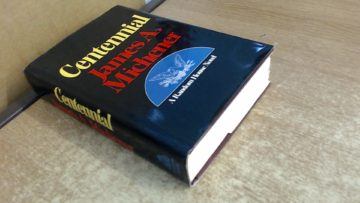 My father’s tastes in reading were very eclectic, but there were a few authors who he truly fell in love with. The one that sticks out the most in my mind is James Michener, the remarkable writer of historical fiction who became famous for his multi-saga accounts of entire regions like the Chesapeake, Poland, Texas, Hawaii and Mexico. Even today Michener remains one of a kind, encompassing not just the cultural and political but the geological history of countries and regions in his writing. All of Michener’s volumes are tomes, and it was a testament to my father’s qualities of patience, doggedness and love of long books that he read most of these multiple times. In fact I seldom saw my father reading a short book, and along with Michener, his readings of William Manchester (“The Arms of Krupp” and “American Caesar”) were further examples of favorite long reads: he provides a good role model in this age of the 240 character tweet and the millisecond attention span. His most-read Michener book was “Centennial”, about the settling of modern-day Colorado. One of his favorite things to do was to whip up a deathly spicy mix of rice puffs mixed with generous amounts of chili powder, oil, onions, tomatoes and cilantro as the perfect accompaniment to the book. I still see him in my mind’s eye, sitting cross-legged on the floor, munching on a large platter of this potent mix, lost in the pages of a very dog-eared “Centennial” and oblivious to his surroundings, the sheer pleasure of the written word palpable on his face. I have the same image of him reading Stone’s “The Agony and the Ecstasy” I recently acquired a first edition of Michener’s breakthrough 1946 book “Tales of the South Pacific” in pristine condition and a signed copy of Stone’s book, and I really wish my father had been around for me to gift him these copies.
My father’s tastes in reading were very eclectic, but there were a few authors who he truly fell in love with. The one that sticks out the most in my mind is James Michener, the remarkable writer of historical fiction who became famous for his multi-saga accounts of entire regions like the Chesapeake, Poland, Texas, Hawaii and Mexico. Even today Michener remains one of a kind, encompassing not just the cultural and political but the geological history of countries and regions in his writing. All of Michener’s volumes are tomes, and it was a testament to my father’s qualities of patience, doggedness and love of long books that he read most of these multiple times. In fact I seldom saw my father reading a short book, and along with Michener, his readings of William Manchester (“The Arms of Krupp” and “American Caesar”) were further examples of favorite long reads: he provides a good role model in this age of the 240 character tweet and the millisecond attention span. His most-read Michener book was “Centennial”, about the settling of modern-day Colorado. One of his favorite things to do was to whip up a deathly spicy mix of rice puffs mixed with generous amounts of chili powder, oil, onions, tomatoes and cilantro as the perfect accompaniment to the book. I still see him in my mind’s eye, sitting cross-legged on the floor, munching on a large platter of this potent mix, lost in the pages of a very dog-eared “Centennial” and oblivious to his surroundings, the sheer pleasure of the written word palpable on his face. I have the same image of him reading Stone’s “The Agony and the Ecstasy” I recently acquired a first edition of Michener’s breakthrough 1946 book “Tales of the South Pacific” in pristine condition and a signed copy of Stone’s book, and I really wish my father had been around for me to gift him these copies.
My interest in science was a direct result of the books in my father’s library and my discussions with him. It was thanks to these books that I have wanted to be a scientist for as long as I can remember: except for a brief foray into considering becoming a doctor – and that too because I wanted to do medical research – I never considered another profession. Well written children’s science books can make a world of difference in guiding a young child or teenager toward a scientific profession. But in my case, what really made the difference was a thorough education in the history of science. It’s interesting that while science is my vocation and history is my hobby, it was the history of science that brought me into science; for me history is as much an organizing principle for science as the periodic table of elements. Even today when someone asks me how to get their child interested in science I recommend books on the history of science. Nothing can whet your appetite for the facts of science than tales of heroic scientists. Another advantage of approaching science this way is that you learn very early on that science, for all its pristine beauty and pure facts, is very much a human endeavor.
Two volumes dealing with the history of science were instrumental in guiding me toward the discipline. One was “Giants of Science” by Philip Cane and Samuel Nisenson. Published in 1959, this book is a wonderful collection of capsule histories of scientists ranging from Aristotle to Enrico Fermi, with vivid descriptions of these scientists struggling to understand the natural world. Another book that had a deep impact especially in driving me toward biology was “The Conquest of Disease”, a rousing illustrated survey of humanity’s triumph over deadly diseases, narrating the accomplishments of men like Joseph Lister, Louis Pasteur and Alexander Fleming. The mild-mannered, dogged Scotsman Fleming especially became a hero, as much for his memorable quote about chance favoring the “prepared mind” as for the significance of penicillin. Another book about medical research that had a significant impact not just on me but on others who unlike me actually became famous scientists was Paul DeKruif’s memorable “Microbe Hunters”.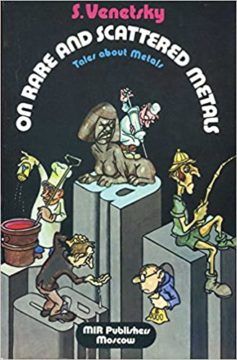
A particularly rewarding selection of books came my way because of a uniquely odd political situation – India’s kinship with the Soviet Union. Ever since the end of the Second World War, India had ostensibly pursued a policy of “non-alignment” that sought favors with neither of the two superpowers. In reality the country had abandoned the United States for the Soviet Union, a policy favored by leaders like Prime Minister Jawaharlal Nehru because of their socialist leanings. In my view this policy grievously harmed India and set back the country’s progress by decades, but at least one minor ancillary benefit of the Soviet alliance was the availability of Russian science books which were known for their excellent pedagogy and rigor. Both Russian science – especially mathematics and physics – and Russian science education were outstanding and unknown in the West for a long time. Particularly delightful in this regard was a collection of books published by Mir Publishers in Moscow, including two utterly charming chemistry books by S. Venetsky titled “Tales about Metals” and “On Rare and Scattered Metals”; each of these tells the story of important metals, their discovery and their applications and are illustrated with funny cartoons. Another first-rate set was a series of physics and math books by Y. Perelman with titles like “Fun with Maths and Physics“.
While the latest and greatest books, especially expensive ones like encyclopedias, were impossible to get your hands on, I had a great stroke of luck. It just so happened that we lived right across the street from the main branch of the British Council Library in Pune. Even today, the British Library is the world’s largest library system, equalled only by the Library of Congress. “BCL” as we called it was like Ali Baba’s cave of treasures. Multivolume encyclopedias and science and history volumes by leading British and American authors that would be completely unavailable otherwise were available in plenty, ready to be checked out. I remember going there as a boy of 12 or 13 and being told that membership was available only for adults. Fortunately because my mother was a professor, she got special privileges in being able to check out as many books as I wanted.
The intense yet strangely bucolic time I spent at BCL stands out as one of the fondest learning experiences of my childhood. I spent hours and hours there, sometimes entire weekends, and I was in awe of the gems I could discover especially in the reading room which housed the most expensive volumes that weren’t available for checking out. The reading room also had magazines like New Scientist and Nature. The books in BCL not only told me what I could learn but what I would have to make many efforts in order to learn; memorably, Subrahmanyan Chandrasekhar’s impenetrably dense “The Mathematical Theory of Black Holes” – a volume in whose preface the Nobel Prize-winning theoretical physicist says that he had to invent new mathematical symbols after he ran out of the standard Greek ones – told me that perhaps I was not cut out for theoretical physics. Two intellectual treats that I remember poring over for hours were the prolific John Gribbin’s “Q is For Quantum” and “Companion to the Cosmos” which are basically dictionaries of particle physics and cosmology. I spent time not just reading but memorizing the entries in these volumes. There were others that left a dim but still palpable impression, volumes that I would return to in my professional career, most notably Peter Atkins’s “Molecular Quantum Mechanics” and the famed “CRC Handbook of Chemistry and Physics”.
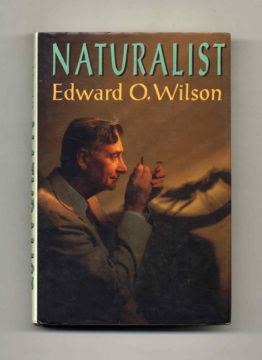
Perhaps the most important book that I found in the library was E. O. Wilson’s autobiography, “Naturalist“. Until then, while I had read my share of well written science books, this was a true revelation. Here’s a scientist who can truly write, I thought. Along with writers like Jacob Bronowski, Freeman Dyson and Loren Eiseley, Wilson remains one of those select few scientists who are blessed with true literary talent. Reading his book while perched on top of a hill during a mountain retreat with my parents, I dreamt of traveling to exotic places and discovering new species of alien insects.
By this time my love of entomology was already blossoming and reading Wilson launched it into high orbit. Mason and pickle jars filled with grasshoppers, ants, colorful beetles and praying mantises began to appear on a regular basis for the next few years in our living room, patiently tolerated and in fact encouraged by my parents. For a few years I was absolutely crazy about insects, to the extent that I became that weird nerdy guy that everyone wanted to make fun of in school. But I couldn’t care less. During physical education lessons in school, while everyone was playing soccer, I would sneak off to a small but dense patch of brush and grass by the side of the field, collecting bottle in hand, trying to get my hands on any new kind of insect that I could, sometimes joined by a dedicated pair of friends who were fine with censure from their fellow cool kids. In time, every patch of green, whether on the school field or a family trip or even in my uncle’s backyard, became for me a universe of possibilities. Once I sneaked a colorful rare beetle in a matchbox into class. Seated in the back row, I was looking at when the teacher noticed and in a fit of anger asked a fellow student to throw it out of the window. Without asking her permission I ran out of the school building and spent the rest of the day trying to find the critter, leading to a parent-teacher meeting organized with haste. Another time I somehow got my hands on a bottle full of white-eyed fruit fly mutants from a genetics lab. Somehow they escaped, and for the next few days we were swatting away white-eyed fruit flies from food in the kitchen. I am convinced that if entomology (and science in general) had commanded the kind of respect and attention that medicine, engineering and business command to this day in middle-class Indian families, I would have become an entomologist.
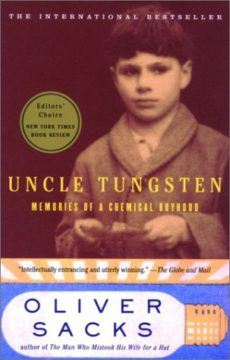 What Wilson did for entomology for me, Oliver Sacks did for chemistry. I don’t remember where I picked up Sacks’s superb autobiographical account of his chemical explorations, “Uncle Tungsten“, but it was probably at one of many book fairs my father used to take me to. I already had a nascent chemistry “laboratory” housed in a spare bathroom in our apartment, and reading Sacks’s adventures as a “chemistry-mad boy” inspired me to conduct more of my own chemical investigations. One of the things that makes “Uncle Tungsten” such an exciting read is the access to dangerous chemicals that Sacks had, partly because of his Uncle Tungsten’s metallurgical shop and partly because those were simpler times when you could buy a pound of cyanide from the local pharmacist, no questions asked. When I was 10 my mother visited my uncle in the United States and brought back a Gilbert Chemcraft chemistry set. It was a childhood dream come true, and the set essentially started me off on my present career in chemistry. Potassium ferrocyanide, copper sulfate, tartaric acid…the set had chemicals which would be impossible to get today in our safety-obsessed age. But I supplemented these with my own collection. Although you couldn’t get the kinds of stuff in India in the 90s that Sacks could get in England in the 40s, there was a hardware store where, especially if you posed as an “instructor’s assistant” from the local college, you could at least procure things as dangerous as concentrated sulfuric acid, magnesium ribbons and sodium metal.
What Wilson did for entomology for me, Oliver Sacks did for chemistry. I don’t remember where I picked up Sacks’s superb autobiographical account of his chemical explorations, “Uncle Tungsten“, but it was probably at one of many book fairs my father used to take me to. I already had a nascent chemistry “laboratory” housed in a spare bathroom in our apartment, and reading Sacks’s adventures as a “chemistry-mad boy” inspired me to conduct more of my own chemical investigations. One of the things that makes “Uncle Tungsten” such an exciting read is the access to dangerous chemicals that Sacks had, partly because of his Uncle Tungsten’s metallurgical shop and partly because those were simpler times when you could buy a pound of cyanide from the local pharmacist, no questions asked. When I was 10 my mother visited my uncle in the United States and brought back a Gilbert Chemcraft chemistry set. It was a childhood dream come true, and the set essentially started me off on my present career in chemistry. Potassium ferrocyanide, copper sulfate, tartaric acid…the set had chemicals which would be impossible to get today in our safety-obsessed age. But I supplemented these with my own collection. Although you couldn’t get the kinds of stuff in India in the 90s that Sacks could get in England in the 40s, there was a hardware store where, especially if you posed as an “instructor’s assistant” from the local college, you could at least procure things as dangerous as concentrated sulfuric acid, magnesium ribbons and sodium metal.
Ensconced in my spare bathroom with these chemicals, I had a blast, sometimes a literal one. I made nitrogen triiodide and saw it pop simply by touching it with a feather. I made a tiny bit of nitroglycerin and watched it explode. I once dropped a half liter of hydrochloric acid on the floor, dissolving the bathroom tiles and invoking nothing more than a stern rebuke from my patient parents. Perhaps the closest I came to killing myself was to make copious quantities of nitrogen dioxide by dissolving my mother’s safety pins in nitric acid, the pungent brown fumes quietly filling the room. In the unventilated bathroom this was a decidedly bad idea. I must have had a close call because many years later when I was in graduate school, I remember coming across nitrogen dioxide in the library in the Merck Index and a chill going down my spine; the symptoms of the gas can be quite delayed since it can cause slow but irreversible edema in the lungs, so that one day a fellow is walking about hale and hearty and the next day he drops down dead. My chemical explorations wouldn’t be advised today, but neither were Sacks’s. And yet they had gotten both of us intensely interested in chemistry.
Always, it was as much a love for history as a love for science that propelled my reading. Just like science, my earliest interest in history came from my father. He was intensely interested in World War 2 history and had enormous respect for the role the United States played during the war; FDR and Eisenhower were both personal heroes of his, as they are of mine. The war is an enduring interest that I have retained ever since. Foremost among the volumes in my father’s library that got me interested in the topic was William Shirer’s monumental history of Nazi Germany, “The Rise and Fall of the Third Reich“. Given the horrors of the war and especially the Holocaust that it describes, I was perhaps a bit too young when I read the book, probably 14 or 15, but it had the intended effect. It opened up my world to the incredible pain and evil that humans can inflict on each other, but it also told me about how men can rise to the occasion and redeem humanity. I must have read Shirer’s book a dozen times since then, and every time I ponder something new in it.
But along with Shirer’s book, the single-biggest influence on my reading of history was a quintessential part of American literary and cultural history – Reader’s Digest. It was Reader’s Digest that educated me about American history, culture and current events more than any other source. My father was an early subscriber to the magazine and he saved hundreds of issues dating back to the 1950s when the magazine first started to be published in India, volumes that were stacked neatly in multiple rows inside the false back of the couch in our living room. Every couple of days I would open the false back and retrieve a volume at random. I loved it all – the “Drama in Real Life” section that described harrowing close escapes from murderers or thieves, the “I am Joe’s Organ” that described the function of a specific organ, the humor section and the crossword puzzle. But the real treat was always the last part, the “Book Section” which featured condensed versions of famous books, usually historical volumes.
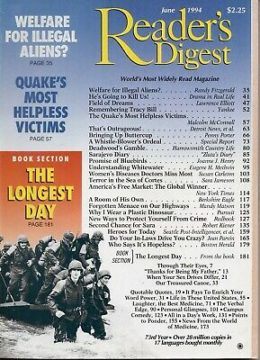
It was through the Book Section that I got introduced to Cornelius Ryan’s “The Longest Day“, the seminal and first-in-class account of the Normandy landings that left an absolutely indelible impression on my mind. Since then I have read hundreds of World War 2 books and perhaps all the major ones about D-Day, but none as vivid and compelling as Ryan’s. Ever since I read the book, visiting Normandy has been a big bucket list item. My father was also a big fan of not just the book but the movie which we watched together many times. For both of us, everything about the Greatest Generation was captured in those stories of the 82nd and 101st Airborne parachuting down into Sainte-Mère-Église, the 1st Infantry storming Omaha Beach and the 2nd Ranger Battalion scaling the cliffs of Pointe du Hoc. Even today when I watch the opening moments of “Saving Private Ryan” or read a new book on the topic, the muscle memory that kicks in is so long-ingrained and vivid that I cannot help feeling overwhelmed and find myself tearing up; I dare to think that I feel I am there. And what do I have in common with those soldiers on Omaha Beach more than 75 years ago, those men who in Stephen Spender’s words “left the vivid air signed with their honor”? All I can say is that if one of the most important goals of reading is to connect the reader across vast gulfs of space and time with men and women who are utterly different from him or her, then reading in my case has fulfilled that goal beyond all expectations.
